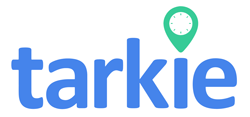
In today's digital age, it's no surprise that more and more businesses are turning to digital tools to streamline tasks, improve collaboration, and enhance productivity. By utilizing digital tools, businesses can reduce paperwork and manual processes while gaining access to real-time data and insights.
So, if you're looking for ways to make your workplace more productive with technology, read on!
The power of digital tools: A Modern Workplace
In today's dynamic work environment, the integration of digital tools has revolutionized workplace productivity. From the traditional pen-and-paper to-do lists, we've swiftly transitioned to digital platforms that streamline our workdays and enhance collaborative efforts. The ability to allocate tasks set reminders, and track progress within these tools optimizes work time and fosters an organized approach.
The challenge to procrastinate diminishes as the tools provide an array of features, such as prioritization and time blocking. The capacity to delegate tasks seamlessly to team members, regardless of geographical constraints, enhances efficiency and ensures projects stay on track.
Embracing these digital resources not only empowers individuals to manage their workloads effectively but also cultivates a cohesive and productive work environment where every team member's efforts synergize for maximum impact.
"In the modern workplace, digital tools amplify productivity by connecting tasks, streamlining teamwork, and turning goals into accomplishments."
Highlights of Using Digital Tools to Improve Productivity
By using digital tools, teams can collaborate more effectively from anywhere around the world, conduct meetings remotely, and maintain up-to-date records of all communications within one platform - saving time and boosting productivity along the way.
"In the fast lane of the digital era, if you're not using digital tools, you might as well be cruising in reverse."
Embracing digital tools in the workplace isn't just about staying current – it's a strategic move that can propel your business ahead by boosting efficiency, enabling data-driven decisions, and fostering seamless remote collaboration for increased revenue.
Getting Things Done: Key Features of Digital Tools
1. Streamlining Process Management
The use of digital tools in the workplace can be invaluable when it comes to streamlining process management. Businesses can easily store and manage documents and create detailed project calendars that are updated in real-time.
Multiple members can monitor teams, track multiple tasks completed, and download reports from different locations; this eliminates the need for physical meetings, which can be both expensive and time-consuming.
Teams can visualize and optimize workflows to identify barriers and smooth run operations. For example, they can see who is assigned to each task, what is due, when and by whom, what progress has been made so far, how much time is left before a deadline needs to be met, etc., all with just a few clicks or taps.
Instead of relying on spreadsheets or manual tracking methods, businesses can now quickly access up-to-date information about their tasks from anywhere.
This allows teams to stay informed, measure productivity, and focus on more important tasks instead of wasting time chasing down information.
2. Effective Communication Strategies
In today's business world, effective communication is a cornerstone to success. To ensure that all employees are connected regardless of physical location or job role, digital tools can be used to simplify the process and bolster collaboration across teams.
Not using effective communication strategies can have an impact on your operations, acting as a silent productivity killer. Without structured communication, shorts break in understanding can make you much less productive. Sharing your goals and plans for the day can get a lot more done than when things are unclear.
When working from home, every minute or less of miscommunication can do more harm than good, as incomplete or mismanaged assignments can lead to hours of extra work.
"Clear communication is the secret ingredient that transforms business plans into achievements."
Instantly communicate and collaborate with team members with real-time messaging tools. Conduct virtual meetings, fostering face-to-face interactions regardless of location using video-conferencing. Lastly, allow teams to easily share files using document-sharing tools, ensuring that everyone is updated.
3. Digital Forms for Task Simplification
Digital forms can be a powerful asset when it comes to simplifying tasks in the workplace.
Digital forms can be tailored to specific needs and can be accessed on mobile devices, making them versatile and adaptable for different situations, depending on your business needs.
Digital forms streamline the process of gathering information from multiple users, reducing the time and resources required compared to traditional paper-based methods.
Digital forms simplify tasks by automating processes, increasing the quality of work, achieving daily goals, and boosting your productivity.
Digital forms enable employees to quickly fill out the necessary information, helping them stay on top of deadlines without spending excessive time on paperwork.
The simplified nature of digital forms, combined with automated validation features, helps ensure that the information you provide is accurate and complete, reducing the chances of errors and delays.
Overall, digital forms are an invaluable resource for any business - from small startups to large enterprises - looking to simplify tasks in their workplaces while increasing productivity at the same time. A valuable resource for businesses of all sizes
If you are looking for a customizable system, Tarkie got you covered. You can design your own digital forms and workflow with Tarkie’s built-in drag-and-drop Form Builder. It even works offline!
4. Automation and Workflow Optimization
The key to successful automation and workflow optimization lies in an effective feedback loop. This allows businesses to monitor employee performance using various metrics such as response times, customer satisfaction scores, and quality assurance scores so they can make informed decisions about how best to improve operations.
As a testament to its effectiveness, consider the case study of a leading logistics firm that implemented an automated system for order processing – with remarkable results! Order processing time decreased significantly while customer satisfaction increased dramatically – all thanks to automation and workflow optimization.
Using these tools strategically in the workplace can help you stay efficient and get more done with less time. Leading to overall productivity in the workplace.
Taking Action: Choosing what works (and what doesn't)
Taking action is an essential part of utilizing digital tools in your organizational workplace. To ensure that businesses are able to make informed decisions about which tools are most suitable for their needs, there are specific steps they should take to become more productive.
The first step is to evaluate different digital tools before making a decision about which one to use. Ask yourself questions such as:
"What is the primary purpose of this tool?"
"How will it help streamline tasks in my organization?"
"Does it have features that can facilitate collaboration across teams and departments?"
"What metrics will I be able to track with this tool?"
It’s also important to consider automation when evaluating digital tools. Workflow automation helps businesses reduce manual labor and save time and resources, allowing them to focus on more valuable tasks.
But automation can only be beneficial if implemented correctly - so think critically about how it could change workflows in your business before you commit any resources to its implementation.
By taking these actionable steps and properly evaluating their options, businesses can make sure they are choosing the right digital solutions for their workplace - Companies that know how, when, and what to choose are the ones who find themselves advancing.
